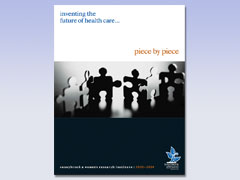Spotlight on Breast Cancer Research: Screening for Breast Cancer - An Exposé
Mammography and clinical breast exams: useful tumour-detecting techniques that have saved, and will continue to save, the lives of countless women globally? Or suboptimal techniques that have failed countless women globally?
This isn't a test. There's no need to pick the right answer, because they're both right – as with many questions in life, it depends on the context.
Clinical breast exams (CBEs) are cost-effective and non-invasive. Experts generally agree that having a doctor probe for lumps during a check-up is a good idea. While more costlyand invasive, a mammogram (a breast X-ray) is recommendedfor most women older than 40. It can detect abnormal growth earlier than a CBE can, which in turn can boost the survival rate in women aged 50 to 69 by up to 35%. In this context, then, these are useful screening methods.
For young women with a family history of breast cancer, however, these techniques aren't optimal. By the time a lesion is detected in a woman who carries a gene for breast cancer (BRCA1 or BRCA2), the likelihood is high that the disease will have advanced. This is partly because young women have denser breast tissue, and their tumours are trickier to detect with the usual methods. These women have a lifetime risk of up to 85%, compared with 11% for most women; therefore, even a finding of no finding isn't reassuring. Furthermore, most of these women will get cancer during the most active years of their lives. At this stage, the options are limited and grim.
"They're left with the alternative of prophylactic mastectomies, which is a difficult and horrific choice to have to make," says Dr. Don Plewes, a physicist and the director of imaging research at SWRI. A prophylactic mastectomy is the removal of both breasts. It's an option that has left many oncologists, including S&W's Dr. Ellen Warner, perennially frustrated. And it led her to ask an important question: "Is there something we can do better than just watching these women with mammography, knowing that we are going to miss more than half the cancers, which was everyone's clinical experience?"
Turns out there is. Researchers led by Warner and including Plewes recently finished analyzing five years' of data on women with the BRCA1 and BRCA2 genes. Hailed as a landmark result – it was the largest such single-centre study – they found magnetic resonance imaging (MRI) detected lesions with much higher sensitivity then mammography and CBE. (Sensitivity is the ability of a test to detect a disease when it is truly there.)
The results were published in The Journal of the American Medical Association in September 2004. Across the five years, MRI detected breast cancer tumours with 77% sensitivity, compared with 36% for mammography, 33% for ultrasound and 9% for CBE. When MRI was combined with the other techniques, sensitivity surged to 95%. Even the false positive rate (when a tumour is identified as being there, but is not), which often is high with MRI, dipped over time. Warner thinks back. "It was incredibly exciting to find for the first time tiny cancers that clearly were invisible with mammography," she says.
Plewes recalls that the team was "thrilled." An extra dollop of gratification, flavoured by mild surprise, came from seeing that other large studies had similar findings, he adds. They know they're on the right track. Naturally, there are still questions – this is the infinity loop of science. The biggest one is, does early detection with MRI save lives?
"My gut feeling is yes, but we have to prove it," says Warner, smiling. And this is just what she says she and the "amazing imaging researchers" at SWRI are working to do.
PDF / View full media release »


